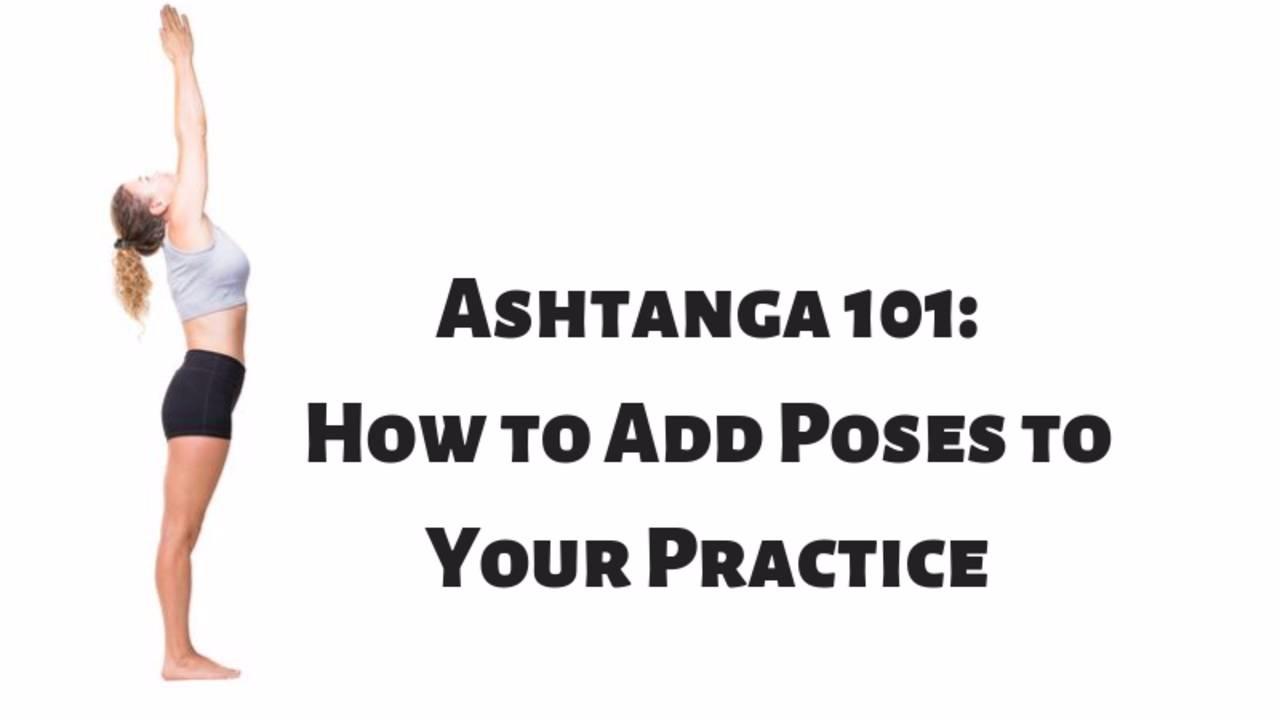
Ashtanga 101: How to Add Poses to Your Practice
Oct 04, 2019In my last Ashtanga 101 blog I wrote about when is the right time to start a new series. Read it here.
This of course raises the question, how do you go about adding postures?
Personally, I am a fan of adding one pose at a time to the end of the current series. For example, a student would continue to practice all of Primary first to lead into the addition of Second Series postures. After setu bandhasana, Second Series postures would be added one by one. When a student finishes the last posture of their current Second Series practice, it’s time for backbends and closing sequence - this always remains at the very end of the practice.
There are occasions when I teach new postures in pairs, but I generally try not to overwhelm students with multiple new postures at once. There are exceptions when it just makes sense - like dhanurasana and parsva dhanurasana. It’s beneficial to sit with a pose and really incorporate it into the body and practice before adding the next. To me this means minimal research, or ideally none, and doing the pose on or near to the vinyasa count.
Once a student is proficient at a pose - let’s say one week for an easier posture and several months for a more challenging posture, then it might be time to move on.
As a teacher, I rarely demand perfection from a student. I like to say it’s about people, not poses. But that doesn’t mean that I won’t demand perfection occassionally. There are some hard stops in the practice. Can’t do eka pada sirsasana? Well then dwi pada isn’t likely to go very well. Can’t hold pincha mayurasana for five solid breaths? How can you expect to do karandavasana? Can't find the legs in laguvajrasana? Well then, you might want to be able to activate those before kapotasana. These are questions you can ask yourself in your own practice.
Of course there are always exceptions - if a student has been working on eka pada sirsasana every day for more than a year and it’s just not happening with that body type I’d absolutely have them keep going. Same thing for pincha - the next several postures are likely to help the student get stronger for pincha. Rules exist for a reason. And there are always reasons to break them - again, it’s about people not poses. Sometimes postures that lie ahead will circle back and help with previous poses. You need to see the series as a whole.
Adding on postures, of course, means your practice gets really long for a while. I have heard this complaint a thousand times. When the practice gets long that makes you incredibly strong and efficient. There is tremendous physical and mental benefit to a longer practice. And just like everything else, it’s not forever. At some point your practice will be split – you will stop doing Primary on a daily basis and continue your work in Second Series. And you’ll be able to do this because of the strong foundations you’ve given yourself with all those long practices.
There are times when doing more postures is easier - for example, in the foot behind head section of third series, putting the foot behind the head tends to get easier the more you do it. And there are times doing more postures is harder - hello, arm balance section of Third Series.
The question of when to add the next posture can be difficult when you’re practicing without a teacher. The truth is, having a solid understanding of the series as a whole is invaluable when deciding to add poses. Having someone guide you who has already been there is huge. I reccomend occassional visits to teachers if possible to help keep you honest.
But alas, if that is impossible, I suggest you continue to move on. It’s been said a million times before, the practice becomes a metaphor for your life. And don’t you want to keep moving forward in your life? As a rule of thumb, judging when to add the next posture is like other things in life - if you don’t feel peaceful about it (in this case the state of the pose), then it’s probably not right.
If you’re practicing on your own, these basic guidelines may help you:
- Consider how long and how consistently you’ve been practicing.
- Pay attention to the flow of your practice and your breath.
- Seek help from experienced teachers/co-practitioners when you can.
- Continually pay attention to where you are so that you can better understand where you’re going.
Join me for my Second Series Interactive Online Study - a personalized online learning experience for you. Space is limited. Your journey is yours alone, but you should never feel alone on it.
Registration is OPEN! Second Series Interactive Online Study begins October 26. All the strategies you need to succeed in Second Series are here!
Check out my Instagram Live on When to Start a New Series here.
Stay connected with news and updates!
Join our mailing list to receive the latest news and updates from our team.
Don't worry, your information will not be shared.
We hate SPAM. We will never sell your information, for any reason.



